Say Nothing shines a spotlight on Northern Ireland’s Troubles across 40 years, through the true story of two sisters who became IRA recruits. Screen talks to showrunner Joshua Zetumer and actors Lola Petticrew and Maxine Peake.
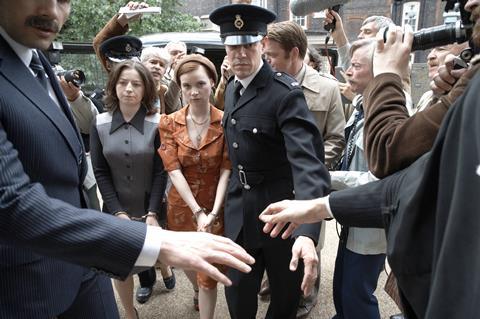
Published in 2018, Say Nothing: A True Story Of Murder And Memory In Northern Ireland by US writer Patrick Radden Keefe used the 1972 abduction, disappearance and murder of widowed mother Jean McConville to tell the history of the Troubles. Spanning 40 years, it focused on Dolours Price and her sister Marian — two members of the IRA responsible for the 1973 Old Bailey bombing in London — alongside republicans Brendan Hughes and Gerry Adams, and McConville’s orphaned children.
Written as a detective story — McConville’s body was not discovered until 2003; her murder remains unsolved — Say Nothing is a riveting piece of journalism, and the rights were snapped up by US cable network FX for producers Nina Jacobson and Brad Simpson. They sent the book to US screenwriter Joshua Zetumer for him to adapt and the nine-part limited series Say Nothing premiered on Disney+ in the UK and on FX/Hulu in the US in November 2024.
While Zetumer had never been a showrunner before (his previous writing credits include the 2014 RoboCop feature reboot and Peter Berg’s 2016 Boston marathon bomber drama Patriots Day), he did have his own history with the Troubles.
“The first time I ever got paid to write was a film about the Troubles for Leonardo DiCaprio,” he recalls. “The movie never got made but was going to be produced by David Benioff and Brad Simpson. So, in my twenties, I had gone down the rabbit hole and done a tonne of research. I was fascinated with the period, with the idea of people putting themselves on the line in service of their beliefs, and the struggle governments have dealing with political violence. This book reignited that passion.”
Once again, Zetumer dived into research. “I talked to former IRA members. I went to Belfast. I had to teach myself how to write Belfast dialogue. I combed YouTube and dug up old interviews with Brendan Hughes to pick up his speech patterns and vocal tics. I tried to be journalistic. I read every book that I could.”
With Keefe also on board as executive producer, Zetumer drafted in Irish filmmaker Kirsten Sheridan, New York playwright Clare Barron and UK writer/producer Joe Murtagh for his writers’ room. Together they broke the story, “finding the balance between the story of the Price sisters, the McConvilles, and the larger political story of the IRA”, says Zetumer. “It was a delicate tightrope, because I wanted to create a show that was authentic to the granular details, so people in Belfast could see their story was reflected. At the same time, I wanted to make Say Nothing accessible for a global audience who had never heard of the Troubles.”
Zetumer took nine months to write the pilot episode. “The biggest thing was gut-checking it with people,” he reflects. “Once we started casting, we asked what they thought about the script. I wanted to make sure I was not trying to blunder into this story like some boorish American and pretend I knew all the answers. Fortunately, we’d done our homework. There weren’t a lot of moments where people said, ‘This smells funny.’”
Personal history

“The names of these people and events, they’re part of my history, part of the lore of my community,” says Lola Petticrew, who was cast to play young Dolours.
Petticrew grew up in Belfast’s Lower Falls Road and still lives in the area. “Dolours and I went to the same school. The house she grew up in is a few doors down from my best friend’s house.”
Petticrew, who identifies as non-binary, admits to being sceptical when they first heard about the project. “You get an email saying, ‘Disney’s doing a piece on the Troubles,’ and you go, ‘What?’ I was afraid it was going to be Americans coming in, tying everything up in a bow, going, ‘We fixed the Troubles.’ But there was also fear — fear that my community would be hurt, my people wouldn’t feel represented and it would cause pain.
“Eventually, I came to the conclusion the only way to ensure it would be done right was to be the person in the room advocating for my community. But it was evident this team cared about what they were doing.”
Moreover, admits Petticrew, the fact it was a US production “allowed us to be a lot braver. I don’t think for a second the BBC would make this. I don’t think RTÉ would make this. They would be afraid to tackle and say a lot of the things we did. We ended up benefiting from it being made with American money and producers.”
A Screen Star of Tomorrow in 2021, Petticrew brings a fierceness and empathy to Dolours, a miniskirted teenager who joins the IRA with her younger sister in the 1970s and rises swiftly through the ranks. “The first moment Lola opened their mouth, I knew we had something special,” reveals Zetumer. “Lola had so much fire and wit and vulnerability. They also have the story in their bones. On top of all that, Lola is an incredibly gifted technical actor.”
But as good as Petticrew proved to be, Zetumer knew the show would not work unless he found someone equally compelling to play the bitter Dolours in middle age. “The moment Maxine Peake showed up on set, I breathed a sigh of relief,” he recalls. “Maxine was so brilliant at conveying that same sparkle and wit Lola had, but because of alcoholism and trauma, the charm has curdled. It’s a very hard thing to pull off, and Maxine did it instantaneously, because she’s so soulful and funny.”
Filming had already started when Peake was cast. “The first thing I did was go, ‘What live footage is there of Dolours?” says the actress. “I watched I Dolours, a great documentary on her, then did a deep dive. I went to Northern Ireland and met with Bernadette Devlin McAliskey, who was in the civil-rights movement, to speak to somebody who was around at that time.”
Peake also watched rushes of Petticrew’s Dolours. “I’m playing Dolours but I’m also playing Lola Petticrew’s Dolours — they have to marry. [My Dolours] has a lot of regret, anger, upset and betrayal.”
Rounding out the main cast are Hazel Doupe and Helen Behan as young and older Marian, Anthony Boyle as young Brendan Hughes, Josh Finan as young Gerry Adams and Emily Healy as McConville’s daughter Helen. Boyle, a Screen Star of Tomorrow in 2016, had known Petticrew since they were 11. They were part of a small but strong Northern Irish contingent on set, including Derry Girls director Michael Lennox, who helmed four of the nine episodes, and camera operator Declan O’Grianna. “He lives in the same street as my mom and daddy,” says Petticrew.
“Decky was brilliant with me, because you spend a lot of time with the camera operator,” says Peake. “If there were any questions, I’d ask him, ‘Could I go there? Could I do this?’ He was brilliant with information — specific, West Belfast information that he knew because he still lives there.”
The production filmed for 135 days from mid-April to late-November 2023 in Liverpool, Sheffield, London and Somerset, but only for a few weeks in Belfast. “One of the difficulties about shooting in Belfast is you don’t want to retraumatise people by driving armoured personnel carriers down the street,” notes Zetumer.
Scenes at Belfast’s Divis Flats were filmed in Sheffield, with studio work at Langleybury Mansion in Watford, where production designer Caroline Story created a massive Lower Falls Road set on the backlot (see sidebar).
High stakes
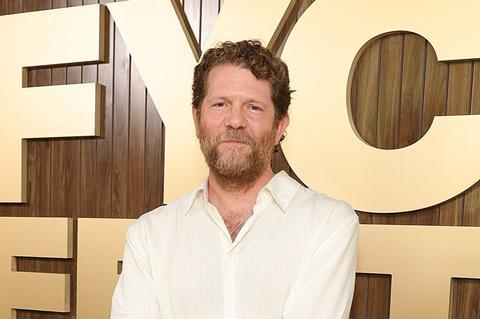
Episode six, ‘Do No Harm’, focused on Dolours’ and Marian’s imprisonment, hunger strike and force-feeding by the authorities. The cast had a strong emotional reaction when they read Clare Barron’s script.
“It was so intense, you’re looking at the script going, ‘I’m going to have to do what?’” says Zetumer. “Lola was adamant about not making a bullshit hunger strike. She said, ‘I cannot do a phony hunger strike then go back to my neighbourhood and have everything be fine.’ The stakes were so high, for Lola in particular.”
The production shot for three weeks at Shepton Mallet, a former prison that now operates as a tourist attraction in south-west England.
“It was emotionally and physically tough,” says Petticrew. ”It was the episode I was most afraid to shoot because I felt we had to get it right, because of what these women went through. It was torture.”
The actor requested (and was provided with) an intimacy co-ordinator. “Most people who think of an intimacy co-ordinator think of sex. But your body being touched, grabbed and abused is also intimacy and, I think, a lot harder.”
Say Nothing does not make any grand moral judgment about the causes of the Troubles, nor those involved. “It was an attempt to capture the exuberance of youth, the idealism of youth, that curdles into disillusionment over time,” says Zetumer.
“Being an outsider allows you a little bit of objectivity because I don’t have a political axe to grind; I’m not out to glamorise the IRA or unilaterally condemn them. It was about finding the humanity of the characters and trying to get the audience to understand why would a young person leave a bomb in the street. It’s about what happens when you give the power over life and death to people who are teenagers and in their early twenties. What happens to an individual when you do that? And what happens to a society at large when you try to change the world with violence and take that to its logical conclusion?”
The response to the show in Northern Ireland has been overwhelmingly positive. “More than I could ever have imagined or dreamed of,” says Petticrew. “Obviously I want people in America and the UK to see it as a springboard for an education. But at the forefront of my mind was my community — the people of West Belfast — and whether they would feel reflected.
“For it to resonate the way it did, to feel like it’s done good and started massive conversations, conversations that needed to happen and allowed people to open up in a way maybe they felt they couldn’t before — that’ll always be one of the biggest privileges in my career.”
“If the show had come out 10 years ago, people maybe wouldn’t have been ready to accept it,” says Zetumer. “There’s no formal truth and reconciliation process in Northern Ireland, so people are not allowed to talk about the things they’ve done during this dark period — that’s true for victims and perpetrators. As a result, stories get suppressed.
“The hope was we would be able to create a space for people to talk about the past,” he continues. “And there’s some evidence people are more willing to talk about this stuff, about the disappeared, people who were killed and secretly buried by the IRA.”
How production designer Caroline Story recreated Troubles‑era Belfast in a Watford car park
Given the Lower Falls Road and Divis Flats in West Belfast as they existed in the 1960s and 1970s were demolished and rebuilt in the 1980s, Say Nothing production designer Caroline Story had no alternative but to look further afield. In the end, the locale was recreated via a clever combination of similar streets in Liverpool and Park Hill in Sheffield, which shares the same Brutalist architecture as Belfast’s Divis Tower, as well as a massive set at Langleybury Mansion in Watford.
“It was fairly substantial,” says Story of the Lower Falls set that measured 70 metres x 60 metres and was built on a parking lot. “From breaking ground to finishing was 18 weeks. The design period was six. And it stood for the duration of the shoot, which was around eight months. We knew we needed a row of houses, and I wanted some shops and eventually hit on a central square. Then we rebuilt [the set] again and again.”
In terms of research, Story was indebted to the work of photographers Alain Le Garsmeur and Gilles Peress, who covered the Troubles, particularly Peress’s book Whatever You Say, Say Nothing. The proportions of the houses were exact, taken from streets in Liverpool, while the domestic interiors were also continually redressed as the story progressed. These included the ground floor of three houses with stairs going up to landings. “We reskinned them. Put in new wallpapers. Moved staircases. Moved mantelpieces. We didn’t have an enormous budget, so I needed to get the most out of every piece we had.”
Two of the houses and three shops opened onto alleyways that ran between the houses. “So you could have these long camera shots following people in and out of houses, without having to match cut or interlink the interior and exterior,” says Story. “There’s a chase sequence with Brendan Hughes that starts in Liverpool with a wonderful drone shot, then you cut to the backlot, and the cut is just seamless. I’m super proud of how we knitted it all together.”




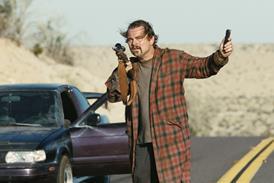


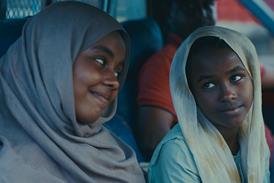

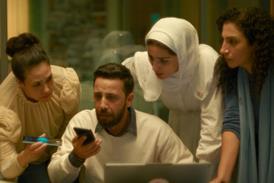


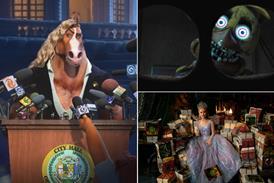


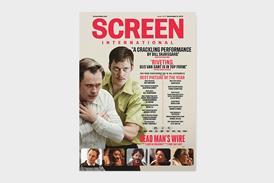
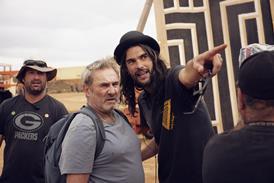







No comments yet